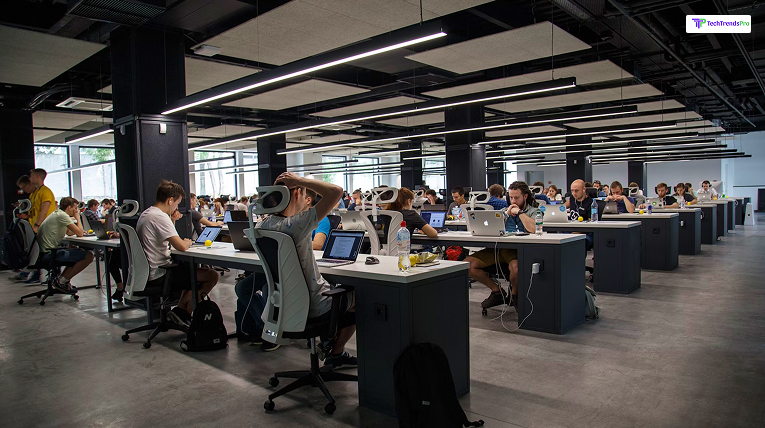
As your business begins to grow, the coffee shop, shared workspaces, or kitchen table might not be enough anymore. That is when a major milestone approach—your first real office space for rent.
But how do you know whether it is the right time? What do you look for? How do you avoid common traps?
In this comprehensive, query-based guide, we’ll explore the essential steps, questions, and considerations for startups looking to transition into their own office space—a move that can significantly influence your productivity, brand image, and growth trajectory.
Why Should A Startup Consider Office Space For Rent?
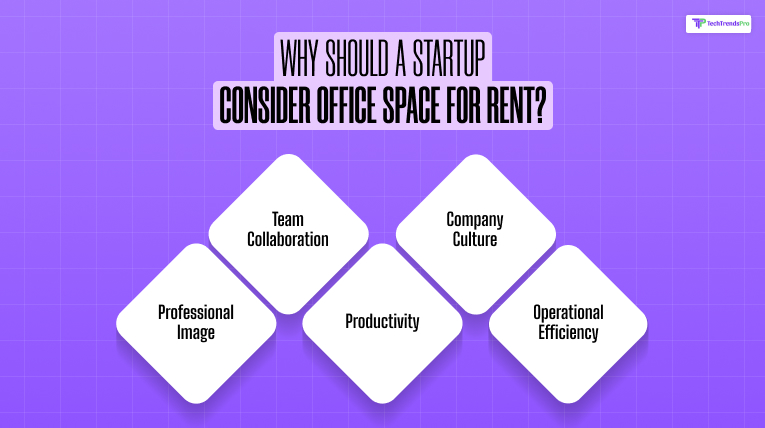
The majority of startups live through and even thrive in virtual or shared spaces in the initial stages, yet with growing team size, their space and collaboration needs increase.
Let’s understand why renting an office might be a great idea:
- Professional Image: Welcoming clients or investors in a VIP office creates credibility.
- Team Collaboration: Face-to-face proximity maximizes faster decision-making and inspires brainstorming.
- Productivity: Minimizes distractions virtual spaces can create.
- Company Culture: An identity is more easily developed with a shared workspace.
- Operational Efficiency: Having access to facilities like printers, storage, and a stable internet line gives structure.
Office renting generally marks the transition from “startup hustle” to “scaling business.”
When Is The Right Time To Rent An Office?
Timing matters. Ask yourself the following:
- Has your team grown beyond your current space?
- Are you hiring additional staff who need desks?
- Do you conduct regular client meetings or interviews?
- Is remote working affecting productivity or collaboration?
- Are investors or partners seeking an office environment?
If you answer “yes” to all the above, you may need to start thinking about office options.
What Kind Of Office Space Should You Lease?
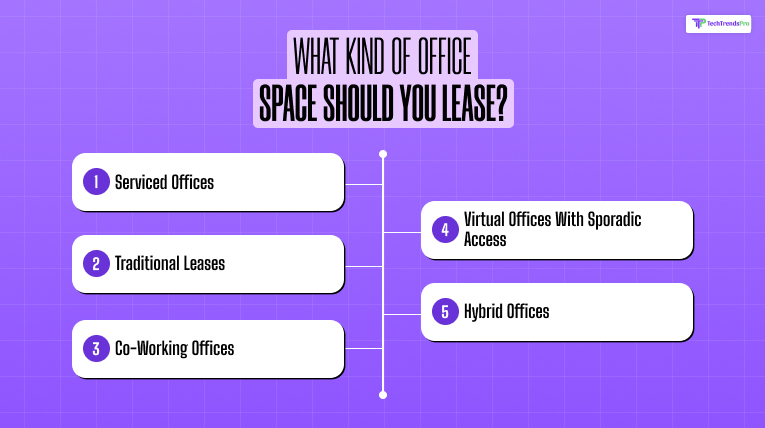
There isn’t a one-size-fits-all option, and the right choice is determined by your business model, size, and finances. Here’s a recap of some well-liked options:
1. Serviced Offices
- Equipped, inclusive offices on flexible leases
- Ideal for small teams and quick setups
2. Traditional Leases
- Long term (3–10 years)
- Ideal for firms with steady growth
3. Coworking Offices
- Shared office with other companies/start-ups
- Offers flexibility, not exclusivity, like Chicago’s coworking spaces.
4. Virtual Offices With Sporadic Access
- Apply the address for mailing and meetings
- Ideal for remote teams that require a physical presence
5. Hybrid Offices
- Combine remote and office arrangements
- For teams that convene only part-time
Select a model that ensures scalability without a financial burden.
What Is The Cost Of Leasing An Office?
The price varies depending on a number of factors, including:
- Location (urban areas are higher than suburban or rural areas)
- Size (square footage required per employee)
- Amenities (internet, utilities, cleaning, security) and multifunction copiers for biusiness.
- Lease Type (short-term versus long-term)
Estimated Sample Monthly Office Rental Fees:
| City | Small Office (5-10 people) | Medium Office (10–25 people) |
| New York | $4,000 – $10,000 | $10,000 – $25,000 |
| Austin | $2,000 – $6,000 | $6,000 – $12,000 |
| Atlanta | $1,500 – $4,500 | $4,500 – $9,000 |
Don’t forget hidden fees like setup fees for the office, deposits, maintenance, or parking fees.
What Should You Look For In A Lease Agreement?
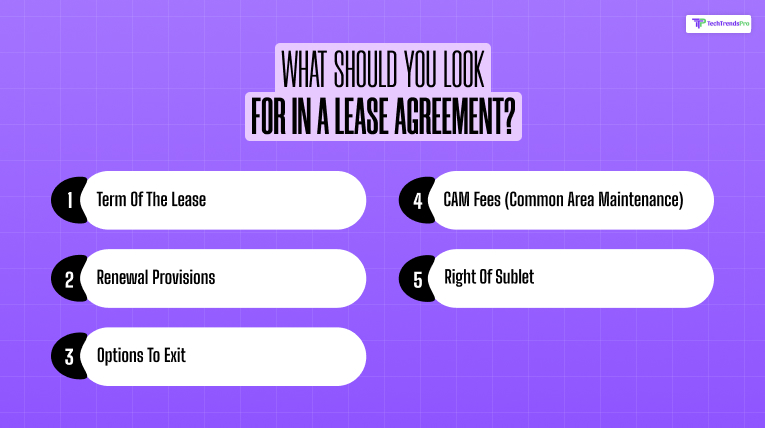
Understand your lease terms. Watch out for:
- Term of the Lease: Avoid locking in long terms if growth is uncertain.
- Renewal Provisions: Good terms if you grow.
- Options to Exit: Space to move if you need to reduce or exit.
- CAM Fees (Common Area Maintenance): Shared expenses for lobbies, bathrooms, etc.
- Right of Sublet: Ability to sublet excess space.
Pro Tip: Have your lease reviewed by a real estate lawyer prior to signing.
How Much Office Space Do You Actually Need?
The average space required for each employee is 100 to 150 square feet. But consider:
- Desk space and layout (open or cubicle)
- Additional rooms (meeting space, lounge space, etc.)
- Storage, IT, or product area
Basic Calculation:
10 employees × 125 sq ft = 1,250 sq ft minimum
Consider renting 10–15% more space for growth.
What Are Some Features You Should Look For In An Office Space?
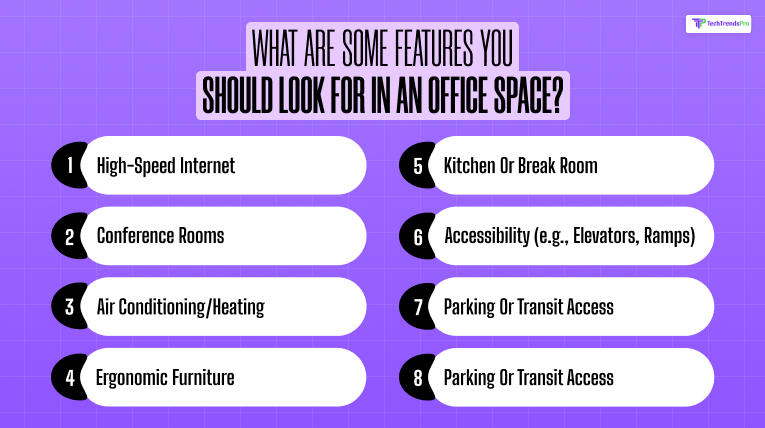
Following is the list of must-have features you should look out for:
- High-speed Internet
- Conference Rooms
- Air Conditioning/Heating
- Ergonomic Furniture
- Kitchen or Break Room
- Accessibility (e.g., elevators, ramps)
- Parking or Transit Access
- Security (locks, cameras, reception)
How Do You Set Up The Office After Renting?
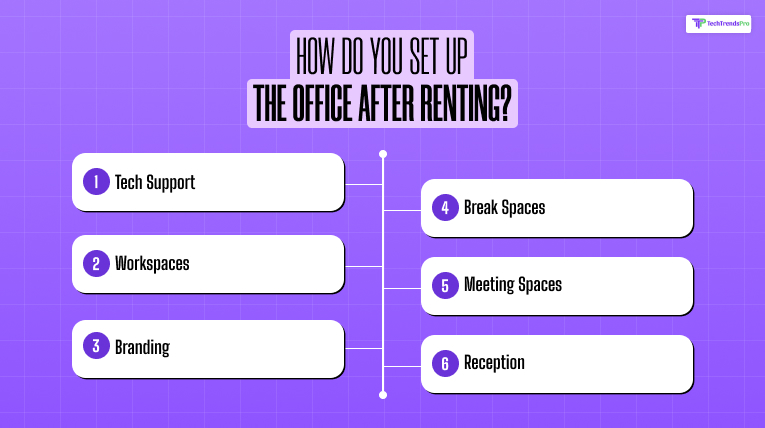
Once you’ve signed the lease, it’s time to make the space your own as a productivity space:
Must-Have Setup Areas:
- Tech Support: WiFi, printers, cabling
- Workspaces: Desks, chairs, monitors
- Branding: Logos, artwork, and inspirational decor
- Break Spaces: Snacks, coffee, water
- Meeting Spaces: Conference tables, video conferencing equipment
- Reception: Desk, signage, visitor log
Make it feel like your company’s home, not just any office.
How Does Office Space Influence Company Culture?
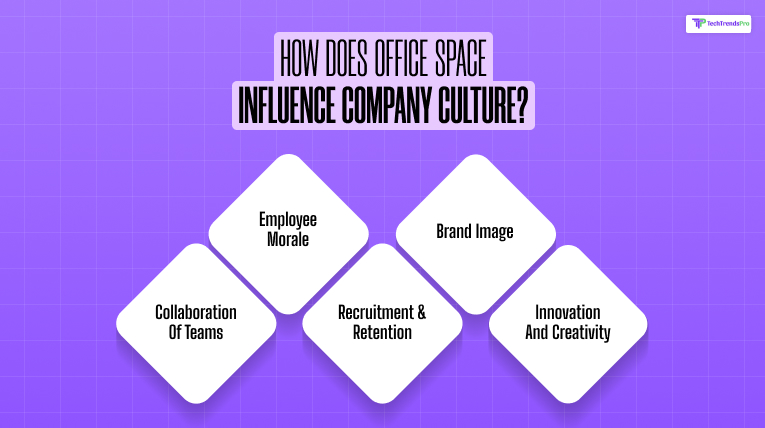
Office space and layout have a deep influence on:
- Collaboration of Teams
- Employee Morale
- Recruitment & Retention
- Brand Image
- Innovation and Creativity
Open-plan offices facilitate communication, and focused spaces improve focus. Choose balance.
A thoughtful space can express your values and vision to everyone who steps through the door.
What Are The Most Frequent Startups’ Errors While Leasing Offices?

Avoid these costly mistakes:
- Excessive Size Commitment – Squandering capital on unused space.
- Blindness to Lease Clauses – Hidden provisions can restrict growth.
- Favoring Poor Locations – Inconvenient sites discourage staff recruitment.
- Under-evaluating Expenses – Always budget for fit-outs and maintenance.
- Omitting Legal Check – Lease errors prove costly to rectify.
Don’t think long-term, think long-term.
How Important Is Office Location?
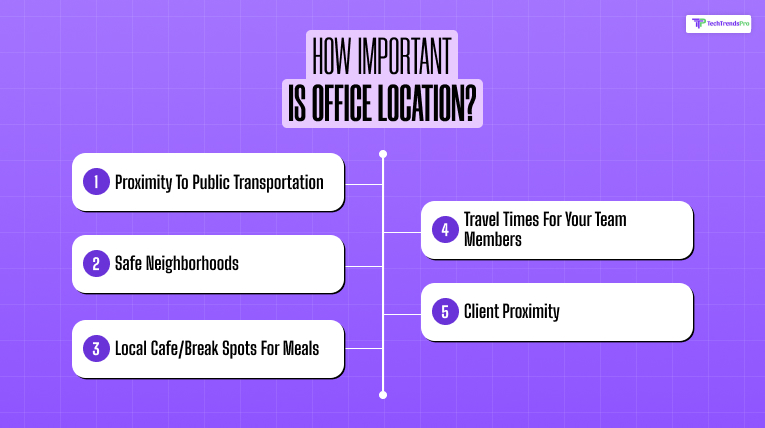
The ancient real estate aphorism “location, location, location” is at play here as well.
Make your priority list:
- Proximity to public transportation
- Safe neighborhoods
- Local cafe/break spots for meals
- Travel times for your team members
- Client proximity
A bad location can negatively affect hiring, morale, and productivity.
Can You Use Technology To Help With Office Rentals?
Sure. Technology platforms like LiquidSpace, WeWork, Knotel, and SquareFoot help startups:
- Compare prices and services
- Reserve tours
- Are you aware of real-time availability
- Take advantage of short-term leases
Also, use Slack, Trello, or Asana to coordinate the moving process and set up work.
When Is It Time To Level Up Again?
You’ll know it’s time to level up when:
- You’re outgrowing current capacity
- You need extra meeting rooms or private offices
- Your clients or vendors need a more professional space
- You’re hiring at scale and need to future-proof
Consider an office reconfiguration before you move.
Making Office Space A Winning Advantage
Renting your first office is a real growth milestone. It’s not just about space—it’s about building a platform for scale, professionalism, and culture.
Ask the right questions. Know what your team needs. Read the fine print. And choose a space that enables your vision to thrive.
Leasing Office Instant Checklist:
| Step | Task |
| Evaluate Need | Assess needs vs. space and team size |
| Budgeting | Establish cost limit |
| Search & Tour | Use platforms to shortlist options |
| Review Lease | Legal review and negotiation |
| Setup Office | Infrastructure, furniture, branding |
| Onboard Team | Communication, feedback, launch day |
| Monitor & Adjust | Scale up/down based on need |
Read Also:






